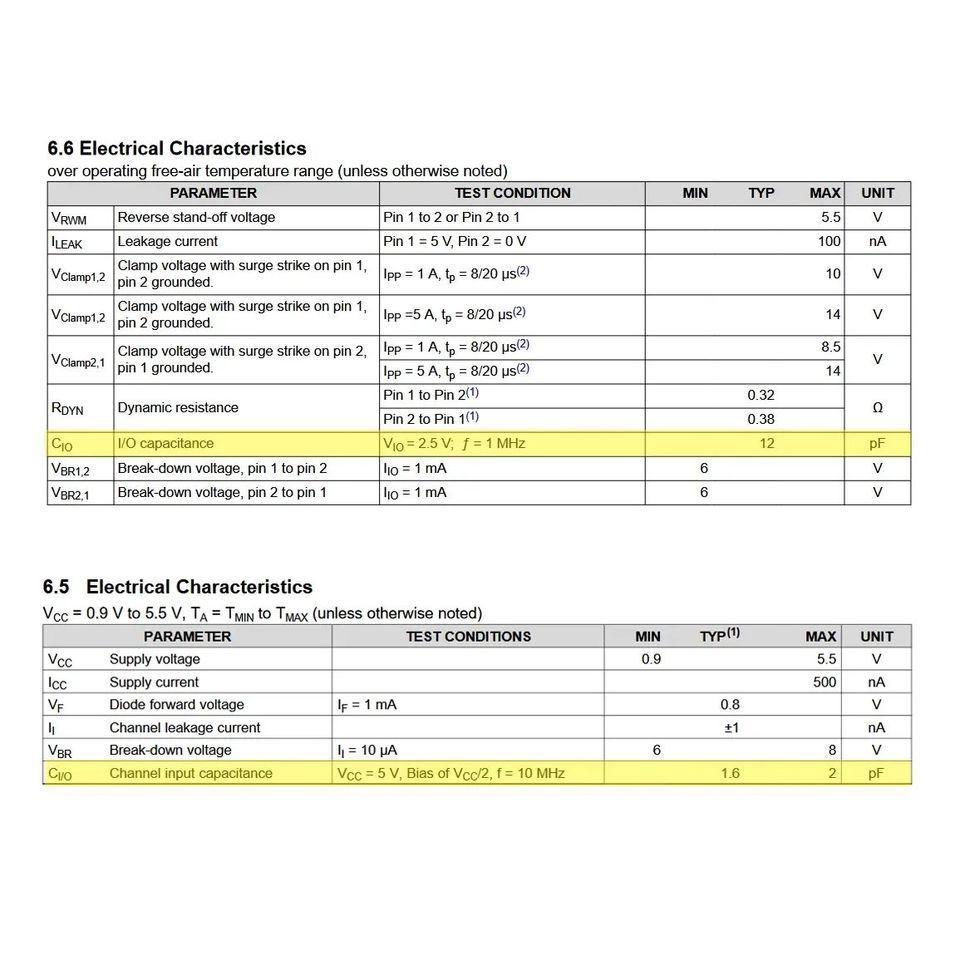Last week we focussed on one facet of ESD diode selection which was unilateral vs bilateral and focussed on when to use each one of them. Another critical item to discuss is ESD capacitance. Please don’t confuse ESD Capacitance with an “ESD capacitor” which is an entirely different thing.

Every ESD diode is connected in parallel to a line/trace that it tries to protect from ESD strikes. ESD strikes are usually rare and in the normal operation of the device, ESD diodes ideally should not affect the regular functioning of the circuit. This is where the capacitance of the ESD diode matters. In normal operation, the ESD diode in the reverse biased mode, shows a capacitance due to its PN junction. The value of the capacitance has a huge role to play in the lines it protects. If you use a diode with higher capacitance to protect lets a high-speed signal like USB 3.2 Super Speed TX/RX data lanes it will create a problem. These data rates are in 10+Gbps and this pulls the line low and high at a very fast rate. Adding a larger capacitor diode will reduce its rise and fall times which will cause communication errors and you make fail the USB compliance eye diagrams.

Hence when you select an ESD diode make sure to use low-capacitance ones for high-speed data lines. You can use higher capacitance ones for GPIO/Vbus lines as there are slightly cheaper if needed. TI has a good chart(check images) on the website showing you the different capacitance ranges and which you can use for different applications based on speed.

0 Comments
Comments are closed.